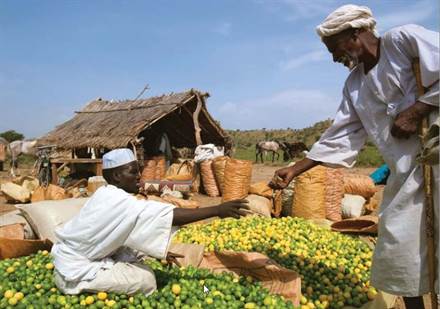
Perspectives from the field: Ecosystem-based approaches to disaster risk reduction
-
Integrated delta management
Starting this week at the Third World Conference on Disaster Risk Reduction, the international community is expected to approve the next ten year plan to strengthen the resilience of countries and communities against disasters. The task at hand is a critically important one, particularly as the number of people affected by disasters has already doubled over the past decade and is expected to further increase.
Today, more and more people and their assets are concentrated in hazardous places, putting lives and livelihoods at great risk. This reality means that we need to think and act differently and recognize that conventional disaster management approaches will no longer be sufficient.
Over the past 10 years of implementing the Hyogo Framework for Action, many lessons in disaster risk reduction have been learned. One important conclusion is that disasters are largely preventable, and that major drivers of disaster risk are rooted in unsustainable development, linked to urbanization, poverty, poor land-use planning, and ecosystem degradation. Hence, the growing consensus is that disaster risk reduction must become central to sustainable development. The post-2015 global framework on DRR therefore provides an incredible opportunity to recognize and support the wide array of solutions traditionally found in development sectors, including the sustainable management of ecosystems.

Healthy, well-managed ecosystems, such as forests, sand dunes, reefs or wetlands, perform important functions that minimize the risk and impact of disasters. They serve as natural infrastructure to prevent hazards or buffer hazard impacts, provide for basic needs such as food, shelter, and water, and support post-disaster recovery needs. These types of ecosystem-based disaster risk reduction solutions can also be highly cost-effective and tap into local knowledge.
North Dafur, Sudan
In places such as Sudan’s North Darfur region, the imperative for using ecosystem- based approaches to reduce disaster risk is clear. Over the last decade Darfur has experienced severe environmental degradation in part from the ongoing conflict as well as from unsustainable agricultural practices, deforestation and overgrazing. Changing climatic conditions such as erratic rainfall, droughts, and floods have further compounded these challenges, exacerbating food insecurity and poverty.
However, efforts to sustainably manage local water resources can help alleviate these pressures. UNEP, with support from the European Union, is working with local communities, NGOs and government actors to apply integrated water resource management in the Wadi El Ku region of North Darfur. This approach, which coordinates the development and management of water and natural resources is helping to foster cooperation over water usage and enable communities to better withstand droughts and flooding.
Interventions include rehabilitation of an existing water reservoir, supporting community forests, regenerating degraded pastureland, and establishing a wadi management committee. As a result, 7,000 acres (2.8 hectares) of wadi land could benefit from irrigation, in contrast to the 900 acres being cultivated annually. This has boosted agricultural production for 30,000 residents in five villages and directly benefited 150 households with no or very little access to wadi land previously. Alongside these interventions, participating villages are developing community-based early warning and disaster preparedness systems to better anticipate water-related hazard events.
Port Salut, Haiti
Similarly, in Haiti, ecosystem-based disaster risk reduction is also being applied. In Port Salut, a coastal municipality in the south-west of Haiti, frequent flooding and coastal storm surges threaten local residents as well as the emerging tourism sector. Flood waters routinely destroy merchandise of local women vendors and damage fishing gear in an area where fishing is an important source of both food and income. In response, “green” solutions that apply a ridge-to-reef approach to coastal zone management are being tested to help reduce risks for local communities.
The establishment of early-warning systems, improved vetiver cultivation on hillsides, ecosystem-based fisheries, and investments in re-vegetation and reforestation along shorelines and river banks, for example, will help reduce hazard impacts on coastal communities. With Port Salut recently declared one of the first marine protected areas in Haiti, protected area management is increasingly viewed as an effective tool for enhancing disaster resilience and supporting sustainable livelihoods.
The challenges faced in the Darfur region of Sudan and in Port Salut, Haiti, are not unique and are echoed in many areas around the world, where innovative, practical, and sustainable solutions are equally needed. With the benefits of investing in healthy ecosystems now well-documented, what is needed is a long-term global framework that recognizes the valuable role of ecosystems in reducing disaster risk and bridging the gap between global policy and practice.
More information:
Find out more about UNEP’s work in disaster risk reduction.
